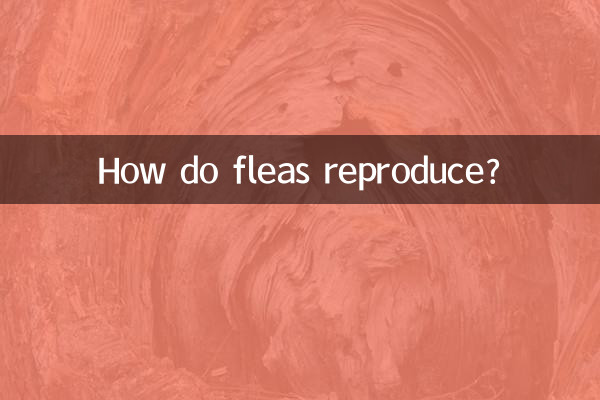Title: How do fleas reproduce?
Fleas are a common parasitic insect that feed primarily on the blood of mammals and birds. They reproduce extremely well, and understanding the flea reproduction process is crucial to preventing flea infestation. This article will detail how fleas reproduce, their life cycle, and related data.
1. The life cycle of fleas

The flea life cycle consists of four stages: egg, larvae, pupa and adult. Here is detailed data on the flea life cycle:
| stage | duration | Features |
|---|---|---|
| egg | 2-12 days | White, tiny, usually produced on the host or in the environment |
| larvae | 5-14 days | No legs, feeds on organic matter, avoids light |
| pupa | 7-14 days | Wrapped in a cocoon, sensitive to environmental conditions |
| adult | weeks to months | Parasitic life, blood-sucking reproduction |
2. How fleas reproduce
The flea reproduction process involves the following key steps:
1.Mating: Adult fleas mate on the host, and female fleas need a blood meal to lay eggs.
2.lay eggs: Female fleas can lay 20-50 eggs per day, and the eggs are usually dropped from the host and distributed in the environment.
3.hatch: Eggs hatch into larvae under suitable temperature and humidity.
4.pupate: The larvae form cocoons and pupate after several molts.
5.Feathering: The adult emerges from the pupa and looks for a host to start a new life cycle.
3. Factors affecting flea reproduction
The reproduction speed and success rate of fleas are affected by many factors. The following is a data analysis of the main factors:
| factors | influence | best conditions |
|---|---|---|
| temperature | Too high or too low will delay development | 25-30°C |
| Humidity | Dry environment is not conducive to the survival of larvae | 70-85% |
| host | Host blood is necessary for reproduction | mammal or bird |
| environment | Clutter provides more hiding places | Carpets, beds, etc. |
4. How to prevent and control flea reproduction
1.clean environment: Vacuum and wash bed sheets and pet supplies regularly to reduce the living space for flea eggs and larvae.
2.Use pesticides: Spray flea-targeting insecticide, especially in corners and areas where pets frequent.
3.pet care: Bathe your pet regularly and use flea control products such as collars or drops.
4.natural method: Use diatomaceous earth or plant essential oils (such as lavender, peppermint) to repel fleas.
5. Hot Topics: Hot Content on the Internet in the Past 10 Days
The following are hot topics related to fleas or similar on the Internet in the past 10 days:
| topic | heat index | Main content |
|---|---|---|
| New ways to prevent and control pet fleas | 85 | Discussing the effectiveness of new pet flea control products |
| Strategies for dealing with home flea infestation | 78 | Share your experience of completely removing fleas from your home |
| flea-borne diseases | 72 | Discuss diseases that fleas may spread and preventive measures |
| Natural ways to get rid of fleas | 65 | Introducing chemical-free flea repellent methods |
Through the above content, we can have a comprehensive understanding of the reproduction process of fleas and their prevention and control methods. Fleas reproduce quickly, and control must be timely and comprehensive to effectively avoid infestation.

check the details

check the details